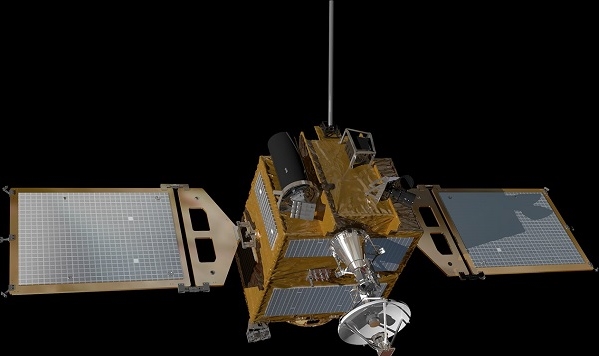Korea will also launch the lunar orbit (KPLO) next year. In addition, a plan to secure and verify the space exploration base technology by performing a one-year mission in the lunar orbit came out.
The Ministry of Science and ICT (Minister Ki-Young Choi) announced that after the successful launch of the Korean Pathfinder Lunar Orbit (KPLO), which is scheduled to be launched in August next year, it will provide a scientific mission operation plan and general researchers to perform one year above the lunar surface 100 km. The support plan for Korea was revealed.
A total of six payloads are carried on the Korean lunar orbiter, including five payloads developed in Korea and one payload developed by NASA in the United States.
First, the high resolution camera (LUTI, LUnar Terrain Imager) developed by the Korea Aerospace Research Institute observes the surface of the moon with a maximum resolution of 5m or less and a position error of 225m or less. Through this, it is expected to search for potential landing sites for the lunar landing ship, which will be developed by 2030.
 |
||
| ▲ Korean lunar orbiter. | ||
The Wide-Angle Polarimetric Camera (PolCam, Wide-Angle Polarimetric Camera) developed by the Astronomical Research Institute produces polarized images and titanium maps of the lunar surface with a resolution of 100m.
The world’s first polarization map on the lunar surface is expected to play a major role in studying space weathering caused by collisions of micro meteorites, solar wind, and high-energy spacecraft on the lunar surface. Will contribute.
The magnetic field meter (KMAG, KPLO MAGnetometer) developed by Kyung Hee University measures the minute magnetic field (±1,000nT range) around the moon, and is expected to contribute to the study of magnetic anomalous areas that are uniquely distributed on the lunar surface and the lunar space environment.
The gamma ray spectrometer (KGRS, KPLO Gamma-Ray Spectrometer) developed by the Korea Institute of Geoscience and Mineral Resources plans to produce five or more types of lunar elemental maps by collecting gamma ray measurement data on the lunar surface.
The results of the search for helium-3, which is attracting attention as a clean energy source, water and oxygen, and construction resources that can be used for lunar base construction, are expected to be used for lunar geology and resource research.
The Space Internet (DTN, Disruption Tolerant Network) verifier developed by the Electronics and Telecommunications Research Institute is planning to verify the space Internet communication technology between the Earth and the lunar orbit, and test message and file transmission, and real-time video transmission.
The ShadowCam, developed by NASA in the United States, is a camera capable of high-resolution shooting of permanently shaded areas, and is expected to shoot lunar polar areas where ice is expected.
If the lunar orbiter succeeds in launching and enters the lunar orbit at the end of 2022, we plan to carry out the targeted scientific mission from January to December 2023. It plans to support utilization research.
The US and NASA also selected 9 scientists in the US to participate in lunar scientific research in December last year. The two countries are continuing international cooperation for successful lunar exploration and joint use of exploration results. It is expected to be created.
“The development of the lunar orbiter, which is the first challenge in Korea, overcomes various difficulties, and is currently being stably promoted with the aim of launching in August next year,” said Lee Chang-yoon, director of the Ministry of Science and ICT. They are expected to be able to contribute to the success of the U.S. lunar manned exploration program (Artemis) as well as serving as a cornerstone as Korea’s first space exploration achievement.”
